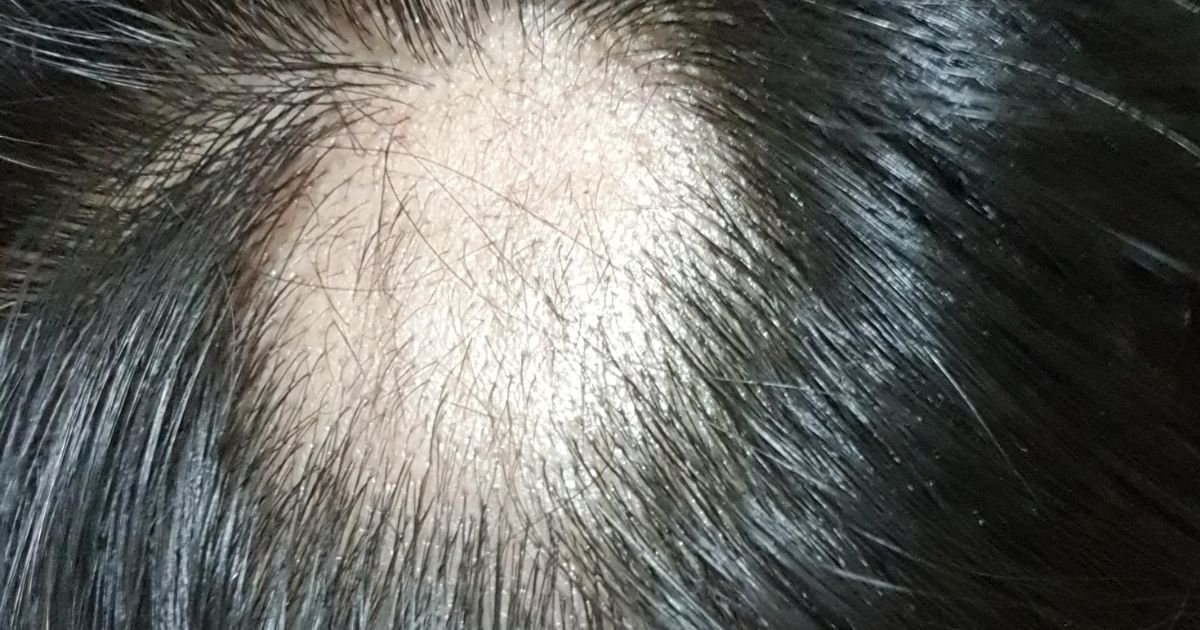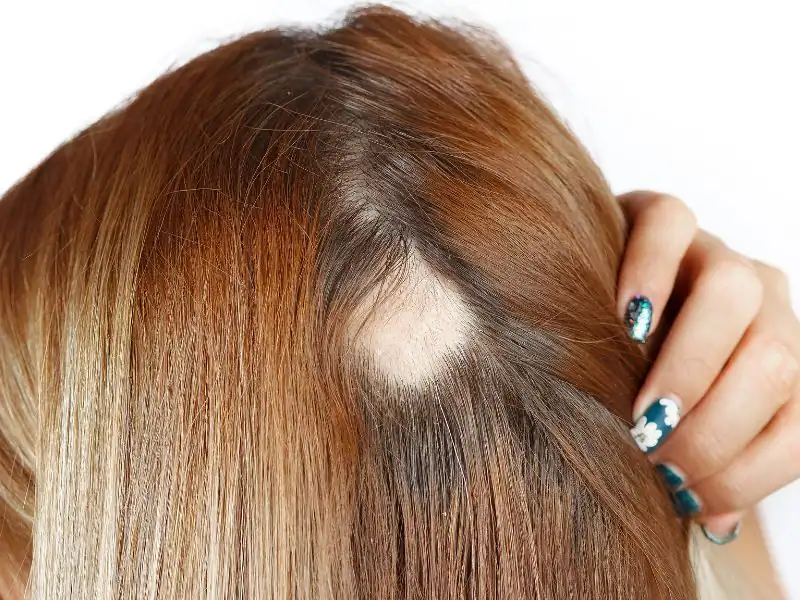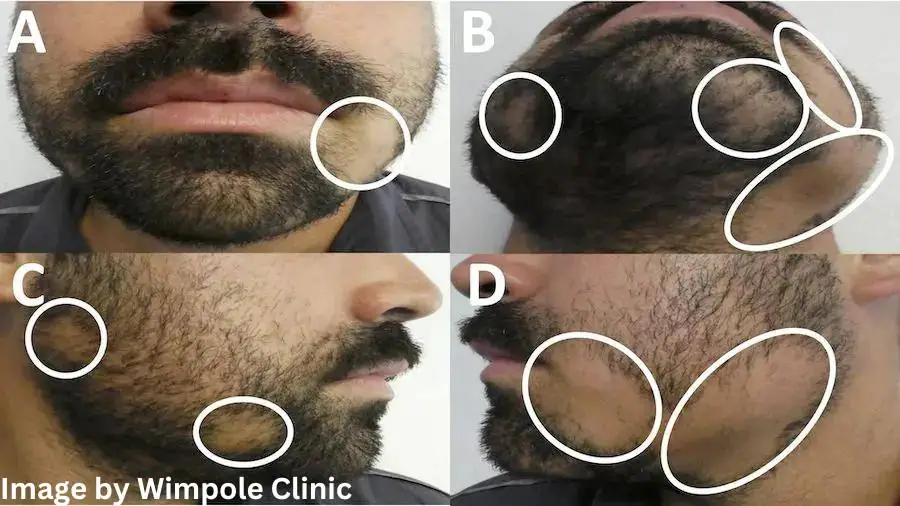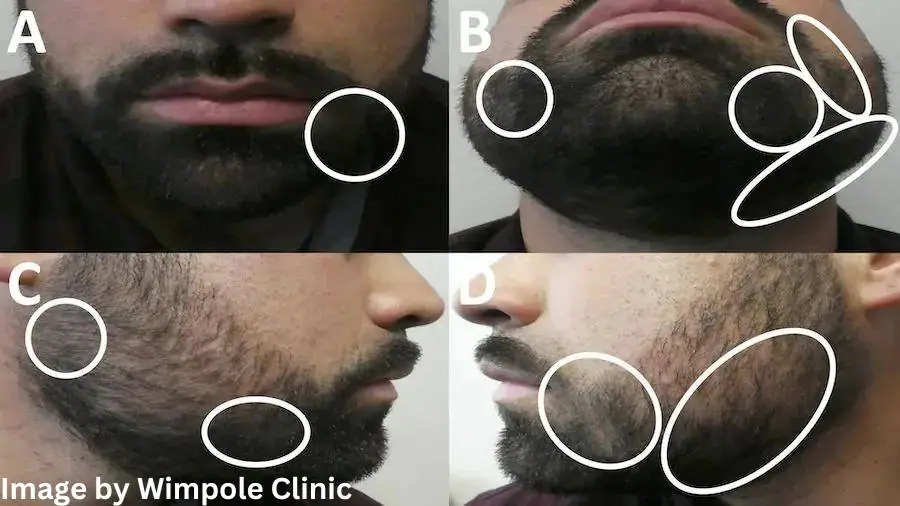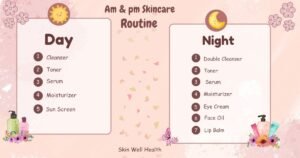Alopecia Areata: How to Stop it from Spreading: You Need To Know
Introduction
A lot of people, of all ages and genders, worry about losing their hair. Alopecia areata is a type of hair loss that can be very upsetting. People with this autoimmune disease lose hair in small, round patches because it attacks hair cells. The exact cause of alopecia areata is still unknown, but there are ways to deal with it and maybe even stop it from getting worse.
If you are experiencing the spreading of bald patches because of Alopecia areata, in this article we will explain how to stop Alopecia areata from spreading and provide the 5 best ways to help stop its spread.
What is Alopecia Areata?
Alopecia areata is an autoimmune disease that makes hair fall in bald patches. It affects a lot of people around the world, both men and women of all ages. The cause is not completely understood, but it’s generally believed that hair loss occurs when the immune system attacks healthy hair cells due to a mistake.
How common?
- About 2% of the world’s population has a lifetime probability of developing alopecia areata.
- About 160 million people around the world have been reported to have alopecia areata.
- About 6.7 million people in the US are believed to have alopecia areata.
Age at Onset
- Alopecia areata affects more than 80% of people before they reach 40 years of age.
- 40% have signs by the age of 20.
Type of person
- People of all genders can have alopecia areata.
- Women are slightly more likely than men to have the disease, especially people with late-onset disease (after age 50).
Other
- Another 20% of people who have alopecia areata have a close family member who also has it.
- Pitting and ridging in the nails are signs of alopecia areata in up to 30% of adults.
Causes
Although the exact cause of alopecia areata is still unknown, a number of different factors are believed to be involved with its development. Here is an overview of some possible reasons:
1. Autoimmunity — This is the main factor behind alopecia areata. The immune system protects the body from dangerous chemicals in healthy humans. But in alopecia areata, healthy hair follicles are mistakenly attacked by the immune system, resulting in inflammation and hair loss.
2. Genetics — Research has shown a connection between alopecia areata and a few genes, pointing to a possible genetic predisposition. Your chance might be slightly higher if you have a family member who has the condition.
3. Environmental Factors — In some cases, particular environmental factors, such as infections, high levels of stress, or certain medications, may be involved. The exact connection is yet unknown, however.
4. Other Possible Factors — Although the exact cause of alopecia areata is unknown, some people may have alopecia areata due to thyroid issues, vitamin shortages, and hormonal abnormalities.
Also Read:
Top 9 Strong Causes of Alopecia Areata: You Need to Know
Signs and symptoms
Round, smooth patches of hair loss on the scalp or in areas where hair grows, like the beard, eyebrows, or eyelashes.
Loss of hair can occur suddenly or slowly, and the patches can be any size or number of them.
Some people lose all of their hair on their scalp (alopecia totalis) or all over their body (alopecia universalis), but these conditions are not very common.
Also Read:
3 Alopecia Areata Regrowth Signs: According to Alopecian
Can alopecia areata really spread?
When talking about alopecia areata, the word “spread” can be confusing because it’s not really spreading in the typical way. This is a better way to explain it:
People with alopecia areata lose their hair because their immune system attacks the hair follicles. External factors like viruses or bacteria don’t cause this attack, and you can’t “pass” it on to other people.
While it is true that damaged patches may occur in multiple areas, this is not considered “spreading” in the general sense. It is the result of the underlying immune response developing.
Alopecia areata is very different from person to person in terms of how bad it is and how fast it gets worse. Some people may only have a few tiny patches that don’t change and may even go away on their own. Some people may gradually lose hair in more areas than others.
So, it’s not exactly right to say that alopecia areata “spreads” like a disease that can be spread from person to person. But for some people, the disease can spread to other areas of their bodies, which may be seen as “spreading.”
How to Stop Alopecia Areata from Spreading In Best 5 Ways
Here are the five best proven ways to stop alopecia areata from spreading.
1. Changes in lifestyle
Before discussing any medication treatments for alopecia areata to stop spreading, it’s important to make changes in your life that can improve your hair growth and minimize alopecia areata spreading:
Use methods that reduce your stress — Long-lasting stress can make autoimmune diseases like alopecia areata worse. You could add yoga, meditation, deep breathing exercises, or other ways to relax to your daily routine.
Maintain a healthy sleep routine — Aim for 7-8 hours of good sleep every night, since not getting enough sleep can make you more stressed and could have an effect on your health as a whole.
Make a balanced diet a priority — A balanced diet should include lots of fruits, veggies, whole grains, and lean protein sources. These nutrients can improve your overall health and may also have an additional impact on the health of your hair.
Also Read:
The Best Diet for Alopecia Areata: What to Eat and Avoid
Find Your Solution: 11 Best Hair Vitamins for Alopecia areata
Regular exercise is important — Aim to do moderately intense exercise for at least 30 minutes most days of the week. Exercise can help you deal with stress, make you healthier generally, and it might even help your hair health in a surprising way.
Stay hydrated — Drinking ample water is important for your overall health and may also have an effect on the health of your hair.
Quit smoking — There are many health problems linked to smoking, and some studies show a link to alopecia areata. Quitting smoking may be beneficial to your health overall and may even help the health of your hair in some people.
Avoid Harsh Hair Treatments — Avoid using harsh chemicals, extreme heat, or tight hairstyles that can damage the hair and complicate hair loss.
Also Read:
Best 9 Tips by Doctors: How to Alopecia Areata Self-Care
Seek out a specialist right away — Consulting a dermatologist early on can help with an immediate diagnosis and custom treatment plans, which may help stop the disease from spreading and improve long-term results.
2. Minioxidil
People who want to treat alopecia areata can easily get minoxidil over-the-counter because it can be bought without a prescription in many countries.
Minoxidil works by making blood vessels wider and potassium channels open in the skin. This may help hair cells grow and promote hair growth in areas where alopecia areata is present.
Most of the time, minoxidil is safe to use, and patients have reported few side effects. Sometimes people have minor side effects that only last a short time, like itching or dry hair.
Absolutely, minoxidil might still help you even if your alopecia areata has spread and you’re losing more hair. Minoxidil works best when hair loss is just starting or when there are only a few bald patches. However, it can still help hair grow back in areas where alopecia areata is more common.
3. Topical corticosteroids
Topical corticosteroid creams may be one of the best ways to treat alopecia areata, according to studies. They may have a lot of benefits.
Topical corticosteroids’ main benefit is that they may reduce inflammation in the hair follicles. Topical corticosteroids can help hair grow in areas that are inflamed by reducing inflammation.
Before and after six months of topical steroid cream treatment for alopecia barbae (alopecia areata of the beard) By Wimpole clinic
4. Janus kinase (JAK) inhibitors
JAK inhibitors focus on certain enzymes (Janus kinases) connected to signaling pathways inside the immune system. They could be able to stop the inflammatory reaction that damages hair cells in alopecia areata by stopping these enzymes. This may then help the hair grow.
People with alopecia areata have inflammation around the hair cells that are damaged. Because JAK inhibitors decrease inflammation, the condition is unable to spread to other areas of the body or parts of the scalp that aren’t affected.
JAK inhibitors work by affecting the immune system all over the body because they are taken orally. This general strategy makes JAK inhibitors treat serious or wide cases of alopecia areata and can stop it from spreading to new areas.
Baricitinib is the only JAK inhibitor that is currently cleared by the FDA to treat mild to severe alopecia areata in people. On the other hand, tofacitinib and ruxolitinib are two other JAK inhibitors that are being tested in clinical studies and may be available in the future.
5. Topical immunotherapy
In topical immunotherapy, a sensitizing drug, such as diphencyprone (DPCP) or squaric acid dibutylester (SADBE), is applied to the scalp as part of topical immunotherapy in order to provoke an immunological response. In alopecia areata, the immune system attacks hair follicles abnormally; however, this reaction may help regulate that process.
Alopecia areata can be effectively treated in certain cases using topical immunotherapy. The disease may be controlled and stopped from spreading to unaffected areas of the scalp or other parts of the body by the use of topical immunotherapy, which promotes hair regeneration and controls the immune response.
Also Read:
Best 12 Natural Home Remedies for Alopecia Areata – SWH
Conclusion
A full cure for alopecia areata is still not found, but the good news is that there are many ways to deal with it and maybe stop it from spreading. This article looked at five main approaches that you can find helpful:
- Changes to your lifestyle, such as getting enough sleep, managing your stress, eating well, exercising regularly, staying hydrated, and quitting smoking.
- Minoxidil
- Topical Corticosteroids
- JAK Inhibitors
- Topical Immunotherapy

